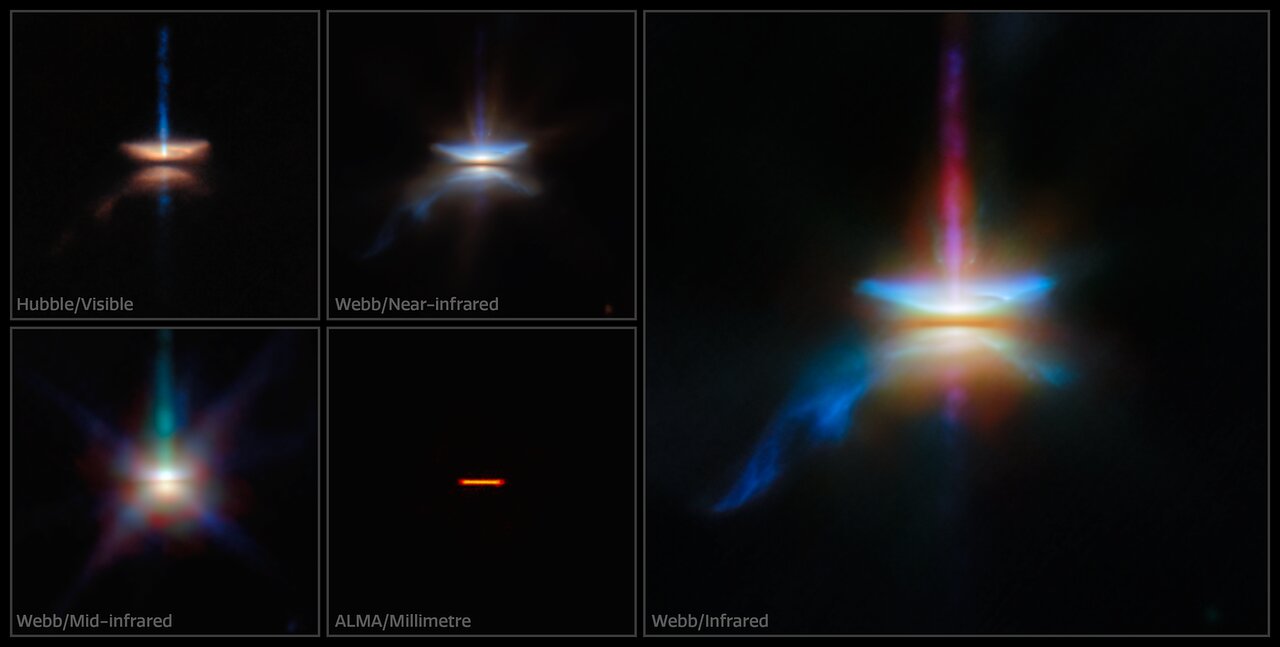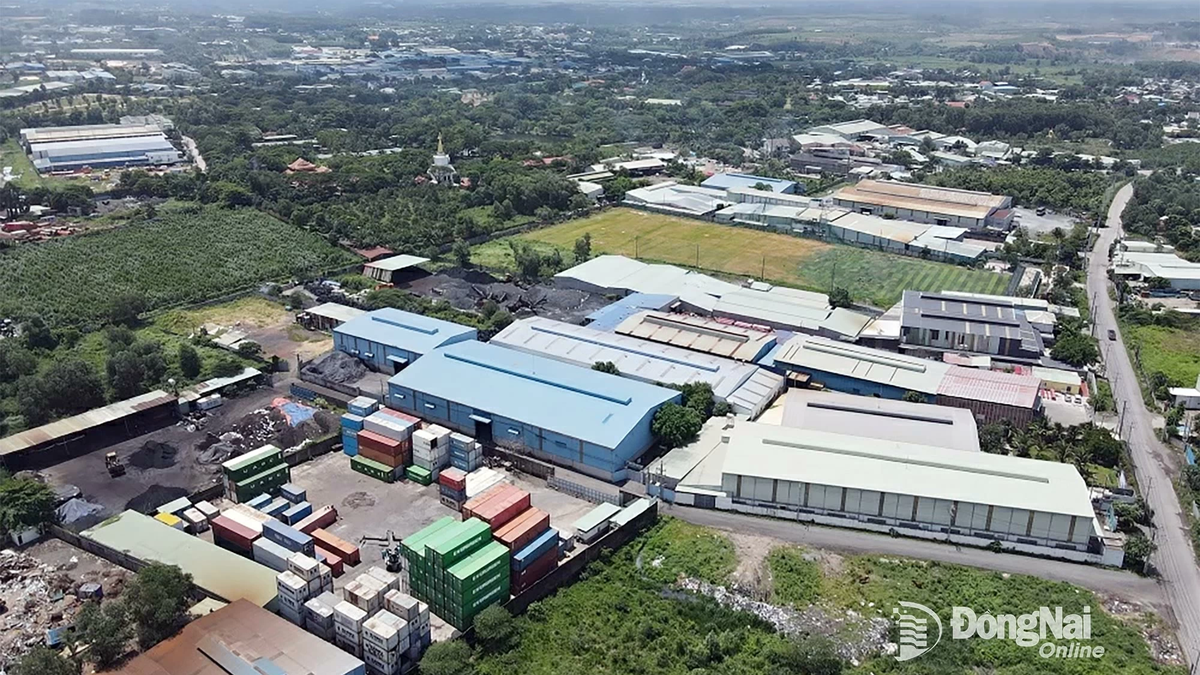(NLDO) - The James Webb Space Telescope has captured spectacular images of the ghostly Herbig-Haro HH 30 object, where new planets are about to be born.
The Herbig-Haro object HH 30 was previously photographed by the Hubble Space Telescope. But now, under the "magical eye" of the world's most powerful space telescope, James Webb, astronomers have discovered a hidden protoplanetary disk.
According to Sci-News , Herbig-Haro objects are bright patches of nebula from "protostars", appearing in star-forming regions, first observed by American astronomer Sherburne Wesley Burnham in the 19th century.
The objects were later named after the two astronomers who first studied them in detail - George Herbig and Guillermo Haro.

The "many faces" of the Herbig-Haro object HH 30, as ESA calls it, are images of HH 30 taken by various instruments on James Webb, as well as by Hubble and ALMA - Image: NASA/ESA/CSA
Herbig-Haro objects are formed when hot gas ejected from a newborn star collides with surrounding gas and dust at speeds of up to 250,000 km/h, creating powerful shock waves.
They come in many different shapes, but the basic configuration is often the same, with two jets of hot gas ejected in opposite directions from a forming star, flowing through interstellar space.
"HH 30 is an example of where this outflow takes the form of a narrow jet," said an international team led by the European Space Agency (ESA), one of the co-operators of James Webb with the US and Canadian space agencies (NASA and CSA).
The new look of HH 30 that James Webb exposed reveals a source star located at one end of the jet, hidden behind a protoplanetary disk that the star is shining on.
A protoplanetary disk is a disk of dust and rocks surrounding young stars. The material in the disk may clump together to form future planets.
Combining data from the ALMA ground-based observatory in Chile, scientists were able to observe millimeter-sized dust grains, found in a narrow region in the central plane of the disk.
Meanwhile, shorter-wavelength infrared data from James Webb show even smaller dust particles, as small as bacteria, widely distributed throughout the disk.
The combined observations also showed that large dust grains had moved to settle where they were found, a crucial stage in planet formation.
In this dense region, dust grains clump together to form pebbles and eventually planets.
A high-speed jet of gas ejected at a 90-degree angle from the narrow central disc was also found, surrounded by a wider conical flow.
"Taken together, these data suggest that HH 30 is a dynamic place where small dust grains and giant gas jets both play a role in the formation of new planets," the scientists concluded.
Source: https://nld.com.vn/lo-dien-sieu-vat-the-herbig-haro-the-gioi-moi-xuat-hien-19625021009412231.htm




































































































Comment (0)